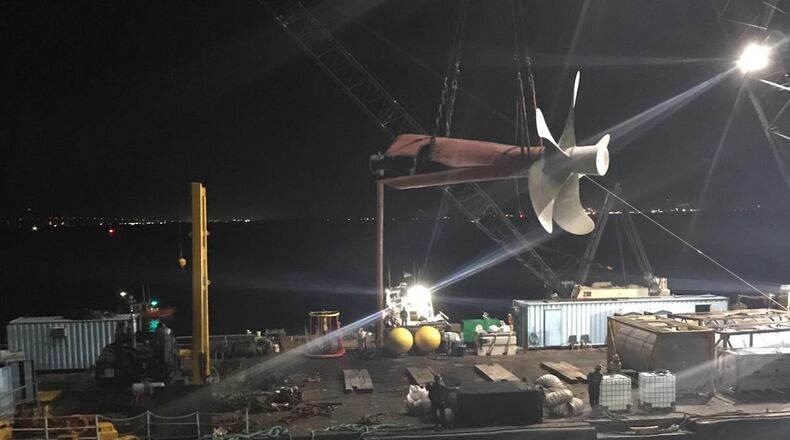Salvage crews continued work on the capsized cargo ship in St. Simons Sound last week, removing the rudder and propeller to improve the stability of the vessel. While there was no indication that the ship’s condition had deteriorated, the removal of about 130 tons of weight reduces any additional stress on the ship, officials said.
The Golden Ray, a cargo ship containing more than 4,000 vehicles, has been sitting on its side near the Port of Brunswick since it ran aground in early September. Plans to remove the wreck by cutting it into pieces are still being developed.
>> READ MORE: Plan to cut up capsized cargo ship has roots in previous disasters
Earlier this month, workers finished pumping oil from all accessible tanks on the Golden Ray in preparation for the ship's full removal and for continued protection of the environment. More than 320,000 gallons of a mixture of oil and water were removed from 26 fuel tanks by salvage workers and divers who accessed any underwater tanks through the inside of the wreck.
The emptied tanks were steam-cleaned to remove fuel residue, and the fuel was pumped onto a barge and taken away for proper disposal. Teams are still working to determine how much fuel was discharged into the environment when the incident occurred. Environmental groups have continued to express concerns about oiling along more than 30 miles of shoreline as well as the potential impacts on local wildlife.
Officials said the completion of the fuel removal has “significantly reduced the remaining threat to the environment” and has helped move them closer to full removal of the wreck.
>> RELATED: Shipwreck could be in St. Simons Sound until late 2020
Naval architects and salvors developed the plan to remove the vessel’s propeller, propeller shaft and rudder, which have a combined weight of 130 tons. Chief Warrant Officer Jeremiah Winston described the stress to the ship positioned on its side as similar to holding a milk jug in an outstretched arm instead of arm down to the side.
The propeller and rudder that were removed from the ship will be donated to the state. The state Department of Natural Resources will decide which parts to use as artificial reef and where they will be placed.
Efforts have now shifted to constructing an environmental protection barrier to be erected before removal operations begin on the Golden Ray. “We are currently evaluating proposals for how to enclose the Golden Ray to prevent pollution or debris that may be released from reaching the larger environment,” said Campbell Houston, a spokesman for the joint information center.
The target date for full removal of the wreck is the end of 2020.
About the Author
The Latest
Featured



